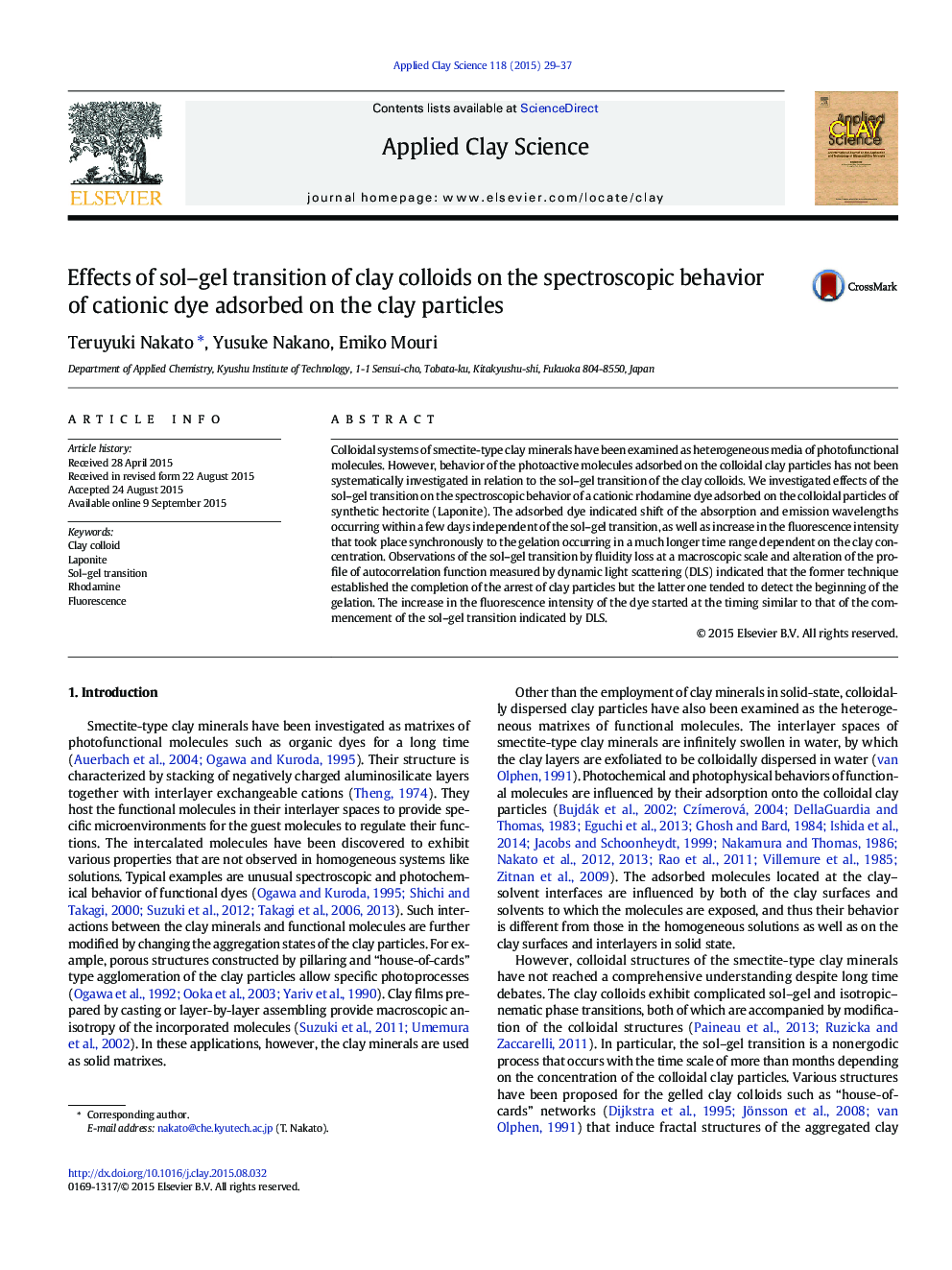| Article ID | Journal | Published Year | Pages | File Type |
|---|---|---|---|---|
| 1694245 | Applied Clay Science | 2015 | 9 Pages |
•Gelation of Laponite colloids enhances fluorescence intensity of an adsorbed dye.•The fluorescence intensity increase tends to detect beginning of the gelation.•Fluorescence wavelength detects microscopic property independent of the gelation.•Spectroscopic data do not support flocculation of the clay particles with the gelation.
ABSTRACTColloidal systems of smectite-type clay minerals have been examined as heterogeneous media of photofunctional molecules. However, behavior of the photoactive molecules adsorbed on the colloidal clay particles has not been systematically investigated in relation to the sol–gel transition of the clay colloids. We investigated effects of the sol–gel transition on the spectroscopic behavior of a cationic rhodamine dye adsorbed on the colloidal particles of synthetic hectorite (Laponite). The adsorbed dye indicated shift of the absorption and emission wavelengths occurring within a few days independent of the sol–gel transition, as well as increase in the fluorescence intensity that took place synchronously to the gelation occurring in a much longer time range dependent on the clay concentration. Observations of the sol–gel transition by fluidity loss at a macroscopic scale and alteration of the profile of autocorrelation function measured by dynamic light scattering (DLS) indicated that the former technique established the completion of the arrest of clay particles but the latter one tended to detect the beginning of the gelation. The increase in the fluorescence intensity of the dye started at the timing similar to that of the commencement of the sol–gel transition indicated by DLS.
Graphical abstractFigure optionsDownload full-size imageDownload as PowerPoint slide
